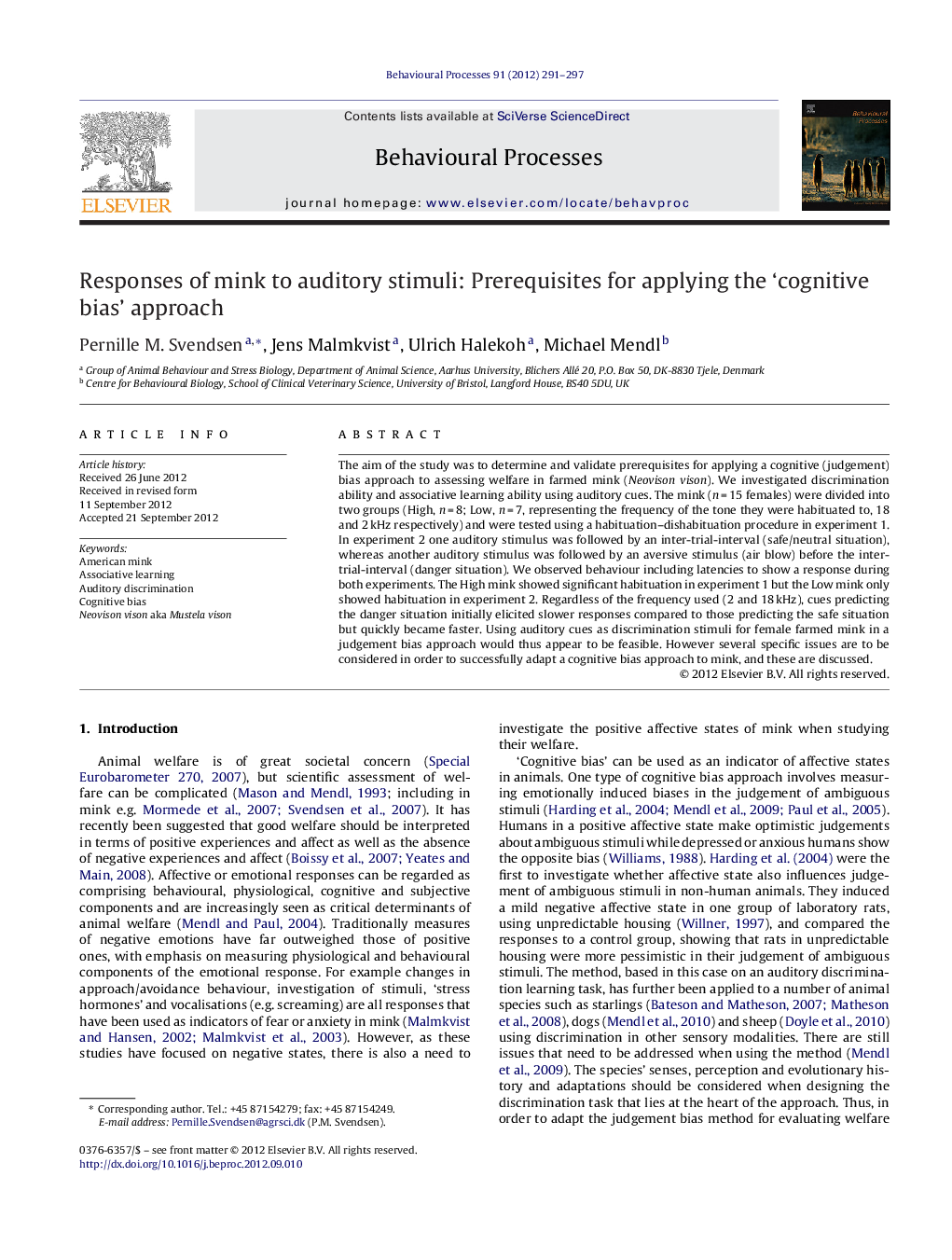| Article ID | Journal | Published Year | Pages | File Type |
|---|---|---|---|---|
| 2426977 | Behavioural Processes | 2012 | 7 Pages |
The aim of the study was to determine and validate prerequisites for applying a cognitive (judgement) bias approach to assessing welfare in farmed mink (Neovison vison). We investigated discrimination ability and associative learning ability using auditory cues. The mink (n = 15 females) were divided into two groups (High, n = 8; Low, n = 7, representing the frequency of the tone they were habituated to, 18 and 2 kHz respectively) and were tested using a habituation–dishabituation procedure in experiment 1. In experiment 2 one auditory stimulus was followed by an inter-trial-interval (safe/neutral situation), whereas another auditory stimulus was followed by an aversive stimulus (air blow) before the inter-trial-interval (danger situation). We observed behaviour including latencies to show a response during both experiments. The High mink showed significant habituation in experiment 1 but the Low mink only showed habituation in experiment 2. Regardless of the frequency used (2 and 18 kHz), cues predicting the danger situation initially elicited slower responses compared to those predicting the safe situation but quickly became faster. Using auditory cues as discrimination stimuli for female farmed mink in a judgement bias approach would thus appear to be feasible. However several specific issues are to be considered in order to successfully adapt a cognitive bias approach to mink, and these are discussed.
► Using auditory cues for discrimination stimuli for female farmed mink is applicable. ► Mink are able to learn associations between specific tones and outcomes. ► They learn the association in relatively few trials. ► More research needs to be done before applying a judgement bias approach to mink.
